
Admiral Augustus Keppel, 1st Viscount Keppel, PC was a British Royal Navy officer and politician who sat in the House of Commons from 1755 to 1782. He saw action in command of various ships, including the fourth-rate Maidstone, during the War of the Austrian Succession. He went on to serve as Commodore on the North American Station and then Commander-in-Chief, Jamaica Station during the Seven Years' War. After that he served as Senior Naval Lord and then Commander-in-Chief of the Channel Fleet.
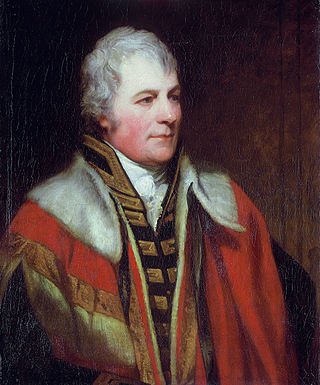
Admiral William Carnegie, 7th Earl of Northesk was a British naval officer who served during the American Revolutionary War, French Revolutionary War, and Napoleonic Wars. While in command of HMS Monmouth he was caught in the Nore Mutiny of 1797 and was the officer selected to relay the demands of the mutineers to George III. He most notably served as third-in-command of the Mediterranean Fleet at the Battle of Trafalgar in HMS Britannia. He later became Rear-Admiral of the United Kingdom and Commander-in-Chief, Plymouth.
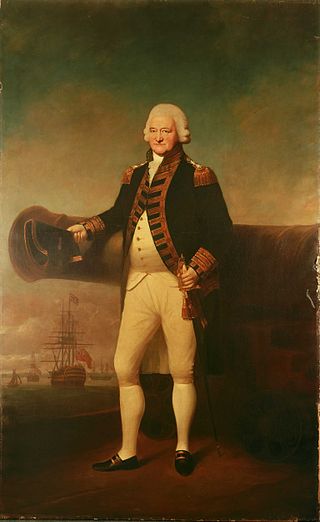
Admiral of the Fleet Sir Peter Parker, 1st Baronet was a Royal Navy officer. As a junior officer, he was deployed with a squadron under Admiral Edward Vernon to the West Indies at the start of the War of Jenkins' Ear. He saw action again at the Battle of Toulon during the War of the Austrian Succession. As captain of the fourth-rate HMS Bristol he took part in the Invasion of Guadeloupe during the Seven Years' War.
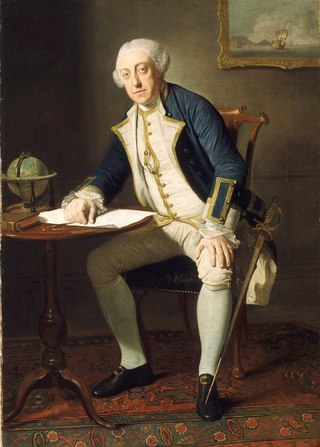
Admiral Philip Affleck was an admiral in the Royal Navy. He was the younger brother of Sir Edmund Affleck. Affleck held various commands throughout the latter half of the 18th Century, most notably as commander-in-chief of the Jamaica Station and as a Lord of the Board of Admiralty. Early in his career he fought at the Siege of Louisbourg where he was promoted commander after carrying out a successful cutting-out mission. He was promoted to post-captain a year later after impressing Admiral Edward Boscawen during the Battle of Lagos. Later in his career he joined Admiral Sir George Rodney in the West Indies and took part in the capture of Sint Eustatius. Between 1790 and 1792 he held the position of commander-in-chief of the Jamaica Station and between 1793 and 1796 he held his position as a Lord of the Board of Admiralty. Although his career was marked with long periods of inaction and unemployment Admiral Affleck was known as a good officer and was well respected by his peers.

Vice-Admiral Sir Joshua Rowley, 1st Baronet was a Royal Navy officer who was the fourth son of Admiral Sir William Rowley. Sir Joshua was from an ancient English family, originating in Staffordshire (England) and was born on 1 May 1734. Rowley served with distinction in a number of battles throughout his career and was highly praised by his contemporaries. Unfortunately whilst his career was often active he did not have the opportunity to command any significant engagements and always followed rather than led. His achievements have therefore been eclipsed by his contemporaries such as Keppel, Hawke, Howe and Rodney. Rowley however remains one of the stalwart commanders of the wooden walls that kept Britain safe for so long.
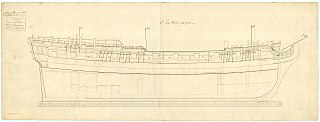
HMS Seahorse was a 24-gun sixth-rate frigate of the Royal Navy, launched in 1748. She is perhaps most famous as the ship on which a young Horatio Nelson served as a midshipman. She also participated in four battles off the coast of India between 1781 and 1783. The Royal Navy sold her in 1784 and she then became the mercantile Ravensworth. She made one voyage for the British East India Company (EIC) between 1786 and 1788. In 1789, she was sold to the French East India Company which had her refitted and renamed her Citoyen. In 1793 the French Navy purchased her and used her as a frigate. She was last listed in 1801.
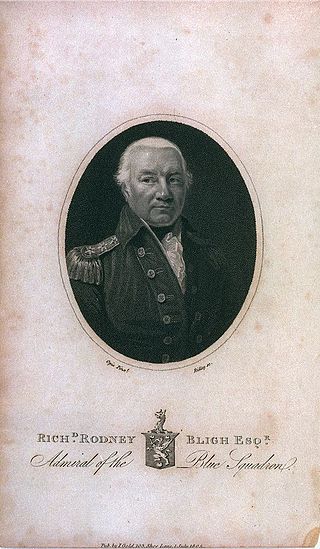
Admiral Sir Richard Rodney Bligh, GCB was an officer of the Royal Navy. He saw service during the American War of Independence, as well as the French Revolutionary and Napoleonic Wars, eventually rising to the rank of admiral. He served as Commander-in-Chief, Jamaica Station and Commander-in-Chief, Leith.

James Richard Dacres was an officer of the Royal Navy who saw service during the Seven Years' War, the American War of Independence and the French Revolutionary and Napoleonic Wars. He eventually rose to the rank of Vice-Admiral.
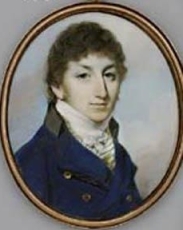
Admiral Hon. Charles Elphinstone Fleeming was a British officer of the Royal Navy who served during the French Revolutionary and Napoleonic Wars. He commanded a succession of smaller vessels during the early years of the wars, achieving some successes against French cruisers, merchants and privateers, before losing his ship on one operation. Combining his naval career with periods of political activity he took part in only one major fleet operation, the Battle of Cape Finisterre in 1805, but spent several years as a Member of Parliament. Connected by birth to a major noble landowning family several of his children went on to inherit or marry into titles and rank in the British peerage. Charles himself died an Admiral of the Blue with extensive Scottish estates.
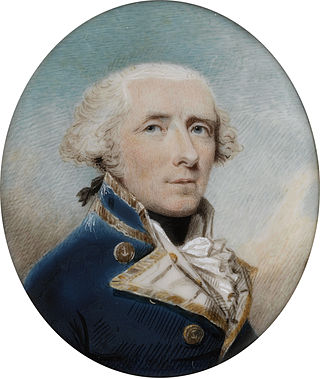
Admiral Skeffington Lutwidge was an officer of the Royal Navy who saw service during the American War of Independence, and the French Revolutionary and Napoleonic Wars. He had a particular connection with Horatio Nelson, who served under Lutwidge as a midshipman on an expedition to the Arctic in HMS Carcass in 1773, and again in 1801 while a captain, when Lutwidge was commander in chief in the Downs. Lutwidge served for a considerable period and in a number of ships, in American waters during the War of Independence. During this time he captured a number of American privateers, and was involved in operations on Lake Champlain. He reached flag rank soon after the start of the French Revolutionary Wars, and served mainly in Home waters as commander in chief of some of the stations on the south coast. He retired from active service with the rank of admiral, and died in 1814, shortly before the end of the Napoleonic Wars. He was the great-uncle of Lewis Carroll.
Admiral Sir Lawrence William Halsted GCB was an officer of the Royal Navy who served during the American War of Independence and the French Revolutionary and Napoleonic Wars.

John Bastard of Sharpham, Ashprington, Devon, was an officer of the Royal Navy who saw service during the French Revolutionary and Napoleonic Wars, and the War of 1812, rising to the rank of post-captain. He also entered politics and became a Member of Parliament.

Hon. Charles Phipps was an officer in the Royal Navy. He served during the American War of Independence, seeing action in a number of battles and engagements. He also went on to have a career in Parliament sitting in the House of Commons from 1779 to 1786.
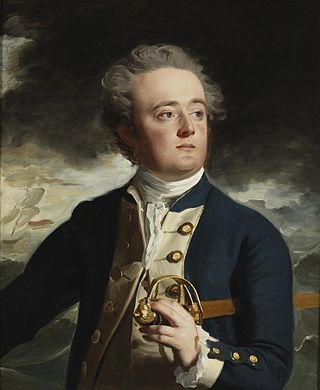
John Loring was an officer in the Royal Navy who served during the American War of Independence and the French Revolutionary and Napoleonic Wars.
Robert Murray was an officer in the Royal Navy who served during the American War of Independence and the French Revolutionary and Napoleonic Wars.
Admiral George Wilson was an officer in the Royal Navy who saw service in the American Revolutionary War and the French Revolutionary War. The son of a Chief Justice of Dominica, he joined the navy as a follower of Sir John Jervis on board the ship of the line HMS Foudroyant. In January 1780 he served on Vice-Admiral Richard Howe's flagship HMS Victory at the relief of Gibraltar, after which he was promoted to post-captain. While in command of the post ship HMS Eurydice he participated in the Battle of Saint Kitts and Battle of the Saintes in 1782 before he was appointed to the ship of the line HMS Fame. Wilson was given command of the frigate HMS Inconstant during the Spanish Armament and then at the beginning of the French Revolutionary War, the ship of the line HMS Bellona. In Bellona he served extensively on the Leeward Islands Station, taking a 44-gun frigate in January 1795. He was then present at the Capitulation of Saldanha Bay in 1796 and the invasions of Trinidad and Porto Rico in 1797. In 1799 Wilson was promoted to rear-admiral and rose through the ranks by seniority to become an admiral of the red in 1819, however he never served at sea as an admiral. He died at his seat Redgrave Hall in Suffolk on 6 March 1826 at the age of seventy.

The Jamaica Station was a formation or command of the United Kingdom's Royal Navy stationed at Port Royal in Jamaica from 1655 to 1830.

Captain Digby Dent was a Royal Navy officer who served as Commander-in-Chief of the Jamaica Station.
Vice-Admiral Sir Robert Lewis Fitzgerald was a British naval officer of the 18th and 19th centuries. He served throughout the French Revolutionary Wars, most notably commanding the bomb vessel HMS Vesuvius, but illness made him unable to go to sea during the Napoleonic Wars, with Fitzgerald instead commanding the Isle of Wight sea fencibles. Made a superannuated rear-admiral in 1825, he was restored as a vice-admiral in 1840.
Rear-Admiral George Murray, 6th Lord Elibank was a British naval officer. He joined the Royal Navy in the early 1720s and fought in the Battle of Porto Bello in 1739 as a lieutenant on board the ship of the line HMS Hampton Court. Murray was promoted to commander in 1740 and given command of the sloop HMS Tryall to take part in George Anson's voyage around the world. A series of illnesses and deaths in Anson's squadron meant that by early 1741 Murray had been promoted to post captain and given command of the frigate HMS Pearl. Pearl and another ship lost contact with Anson in April of that year and after taking heavy damage and casualties through storms and sickness, sought safety in Rio de Janeiro before sailing for England.














